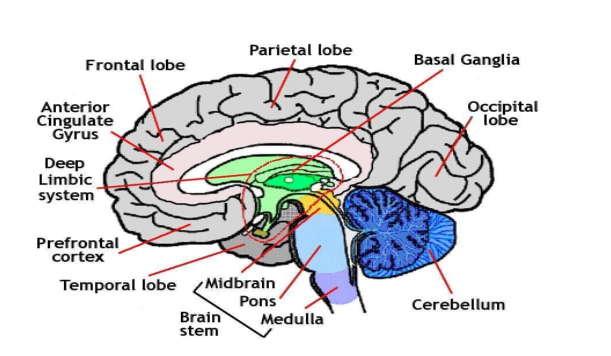
Write a note on nervous regulation of respiration
Answer
503.7k+ views
3 likes
Hint: This is an autonomic and somatic system with specific morphological limits and specific mechanisms of the act at all levels, from the uptake of atmospheric air to subsequent
Complete answer:
Respiration can be synchronized by two mechanisms, explicitly nervous mechanism and chemical mechanism. Nervous regulation of respiration takes account of respiratory centers present in the medulla oblongata. It checks the level of oxygen and carbon dioxide in the blood and sends the obligatory signals by the respiratory muscles.
Respiratory centers are auxiliary divided into two groups, namely medullary centers and pontine centers. Medullary centers comprise inspiratory centers and expiratory centers. The inspiratory center is linked with the inspiration when the calm breathing is going on and the expiratory center is concerned only during forced breathing.

Additional information:
The pontine center has a pneumotaxic center and apneustic center. These are situated in the pons. The pneumatic center directs the activity of respiratory centers and the apneustic center acts on the inspiratory centers and increases the strength of inspiration.
Note:
- During breathing, the intensity of CO in the blood acts on the medulla oblongata which controls the respiratory system. Elevated levels of carbon dioxide communicate with high levels of acid (low pH) and signal the need for more oxygen.
- A rise in PCO (a condition called hypercapnia) decreases the pH level of cerebrospinal fluid. This stimulates the central chemoreceptors increasing the depth and rate of respiration, a condition called hyperventilation. The consequential increase in alveolar ventilation flushes carbon dioxide out of the blood which increases blood pH.
Complete answer:
Respiration can be synchronized by two mechanisms, explicitly nervous mechanism and chemical mechanism. Nervous regulation of respiration takes account of respiratory centers present in the medulla oblongata. It checks the level of oxygen and carbon dioxide in the blood and sends the obligatory signals by the respiratory muscles.
Respiratory centers are auxiliary divided into two groups, namely medullary centers and pontine centers. Medullary centers comprise inspiratory centers and expiratory centers. The inspiratory center is linked with the inspiration when the calm breathing is going on and the expiratory center is concerned only during forced breathing.

Additional information:
The pontine center has a pneumotaxic center and apneustic center. These are situated in the pons. The pneumatic center directs the activity of respiratory centers and the apneustic center acts on the inspiratory centers and increases the strength of inspiration.
Note:
- During breathing, the intensity of CO in the blood acts on the medulla oblongata which controls the respiratory system. Elevated levels of carbon dioxide communicate with high levels of acid (low pH) and signal the need for more oxygen.
- A rise in PCO (a condition called hypercapnia) decreases the pH level of cerebrospinal fluid. This stimulates the central chemoreceptors increasing the depth and rate of respiration, a condition called hyperventilation. The consequential increase in alveolar ventilation flushes carbon dioxide out of the blood which increases blood pH.
Latest Vedantu courses for you
Grade 7 | CBSE | SCHOOL | English
Vedantu 7 CBSE Pro Course - (2025-26)
School Full course for CBSE students
₹45,300 per year
Recently Updated Pages
Master Class 10 Science: Engaging Questions & Answers for Success

Master Class 10 Social Science: Engaging Questions & Answers for Success

Master Class 10 Maths: Engaging Questions & Answers for Success

Master Class 10 English: Engaging Questions & Answers for Success

Class 10 Question and Answer - Your Ultimate Solutions Guide

Master Class 9 General Knowledge: Engaging Questions & Answers for Success

Trending doubts
State and prove Bernoullis theorem class 11 physics CBSE

1 ton equals to A 100 kg B 1000 kg C 10 kg D 10000 class 11 physics CBSE

State the laws of reflection of light

One Metric ton is equal to kg A 10000 B 1000 C 100 class 11 physics CBSE

Difference Between Prokaryotic Cells and Eukaryotic Cells

1 Quintal is equal to a 110 kg b 10 kg c 100kg d 1000 class 11 physics CBSE




